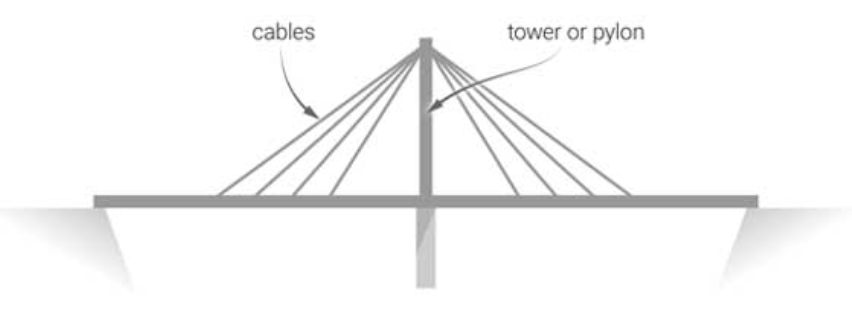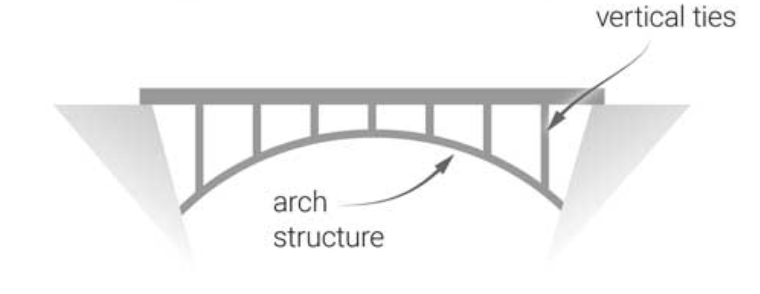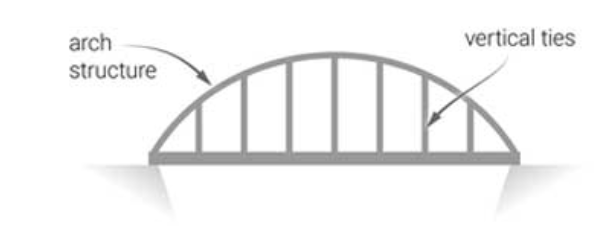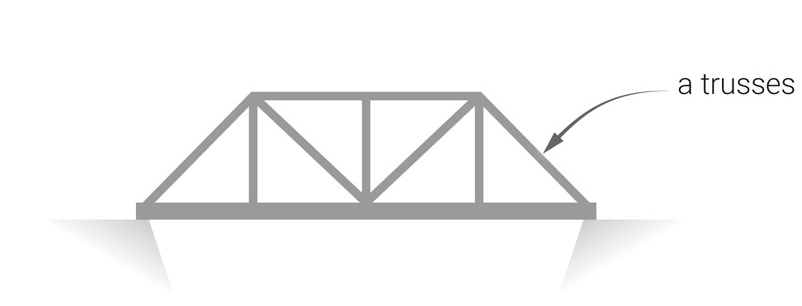Types of Bridges
What is a bridge?
A bridge is a structure that passage over an open space such as a river, gorge, a crevice, or other terrains that are hard to traverse. Bridges can be used to help carry large cargos, vehicles, and people to get one side to the other.
Arch Bridges
What is an Arch Bridge?
An arch bridge is a type of bridge that utilizes arches as the main source of support for the bridge. These arches are usually constructed from smaller blocks or segments of stone, concrete, steel, or iron. Furthermore, compression forces act heavily on the structural integrity of arch bridges.
Why Arch Bridges? Pros and Cons.
Advantages:
- Versatility
- Can span large distances
- Withstands external factors well: natural and structural stress
- Due to compressive forces, makes it very structural strong
- Will not easily distort or change shape
Disadvantages:
- While it can reach great distance, support pillars, known as abutments, need to be relatively close together
- Can take a long time to construct
- Needs to be constructive perfectly in order to be effective
- May require more maintenance
Links:
- Arch Bridge Facts For Kids (kiddle.co)
Beam Bridges
What is a Beam Bridge?
A beam bridge is the oldest and most simple type of bridge. Beam bridge consists of a horizontal beam or platform that spans over the obstacle that needs to be crossed. The horizontal beam is supported on either side of the open space as well as underneath by vertical supports called piers.
Why Beam Bridges? Pros and Cons.
Advantages:
- Easily Constructed and Destructed
- Often have minimal impact to the environment
- More adaptable and flexible when it come to traversing the terrain
- Can be made of a wide variety of materials
- Quickly constructed
- Easily maintained
Disadvantages:
- Limitations on the amount of weight it can carry
- Limitations on height and width
- More susceptible to damage from extreme natural weather as well as basic erosion
Links:
- Beam Bridges Facts for Kids (kiddle.co)
Cable-Stayed Bridges

What is a Cable-Stayed Bridge?
A Cable-Stayed Bridge use cables that are connected directly to a vertical beam, called a pylon, that comes out above the horizontal beam of the bridge. These cables all connect to the top of the pylon making a fan-like pattern that is easily distinguishable.
Why Cable-Stayed Bridge? Pros and Cons.
Advantages:
- Relatively fast construction time
- Versatility of design options:
- Supports: Single Arrangements, Double Arrangements, A-Shaped Arrangements, etc.
- Cables: Mono, Parallel, Fan, Star Shapes.
- Very strong due distribution of load with cable supports
- Can be less expensive
Disadvantages:
- There is a maximum length to span between pylon abutments
- Efficiency is higher on shorter distances
- Can be difficult to maintain and repair
Links:
- Cable-Stayed Bridge Facts for Kids (kiddle.co)
Cantilever Bridges
What is a Cantilever Bridge?
A Cantilever Bridge is a bridge that is supported by a cantilever, which is a beam that is only supported on one side. While this may sound a little unsafe for usage, when two cantilevers are used on either side, it can create a well supported and braced bridge for both wide and narrow crevices.
Why Cantiliever Bridges? Pros and Cons
Advantages:
- Only need support on one side
- They are relatively simpler to construct than other bridges with regard to not needing more support during the construction
- Excellent for deep gorges and other hazardous locations that additional piers would be difficult to construct
- Large and heavy making them much more rigid and strong
Disadvantages:
- Are large and heavy themselves
- Experience a lot of stress due to having less reactionary or external forces
- Can be intricate structures otherwise, making them more complex
- Can be very expensive for materials and complexity
Links:
- Cantilever Bridge Facts for Kids (kiddle.co)
Tied-Arch Bridges
What is a Tied-Arch Bridge?
A Tied-Arch Bridge is much a like an arch bridge flipped upside down. It uses the benefits of an arch; however, this arch is located above the main horizontal beam or deck of the bridge. Additionally, it utilizes ties that connect the arch to the deck for support.
Why Tied-Arch Bridges? Pros and Cons.
Advantages:
- Versatility in materials
- Very strong because of benefits of the arch coupled with the cable or tie support system
- Resistant to external stress and usage
Disadvantages:
- Can be very expensive to the intricacy required to construct it
- Each arch is dependent on the other, therefore, failure in one of them is a huge reduction in efficiency
- Frequent maintenance
- Can take a long time to construct
Links:
- Tied-Arch Bridges (history of bridges)
Truss Bridges
What is a Truss Bridge?
A Truss Bridge is another simplistic and ancient bridge style. It uses triangular sections to give extra support to the horizontal beam or deck of the bridge. These sections distribute the loads that are applied to the bridge making it better able to withstand usage.
Why Truss Bridges? Pros and Cons.
Advantages:
- They are light but are backed by tested structural analysis for strength
- Can be built nearly anywhere
Disadvantages:
- An efficient design must be found, otherwise, can lead to wasted materials because of zero force members
- Can be large and bulky
Links:
- Truss Bridges (history of bridges)
Suspension Bridges

What is a Suspension Bridge?
A Suspension Bridge uses vertical towers or pylons that extend above the main horizontal beam or deck of the bridge as well as numerous cables. These cables connect the towers or pylons to each other as well as to the main deck and help to distribute the loads that are applied to the main deck.
Why Suspension Bridges? Pros and Cons.
Advantages:
- Can span over a much larger distance
- Require less pier abutments due to cable support
- Are relatively cheap because of the usage of less material
Disadvantages:
- Require solid foundation or foundation work
- Has limitations on the load that it can withstand
- Takes a long time to construct
Links:
- Suspension Bridge Facts For Kids (kiddle.co)
Extra Information
Bridge and Bridge Types Information:
- Types of Bridges (engineeringclicks)
- Types of Bridges (britannica)
- Bridge Facts for Kids (kiddle.co)
Bridge Game
Bridge Worksheets
- Bridge Vocabulary Words (easyscienceforkids)
Bridge Videos
- What is a bridge? (SciShow Kids)
- DYI Past Bridge










